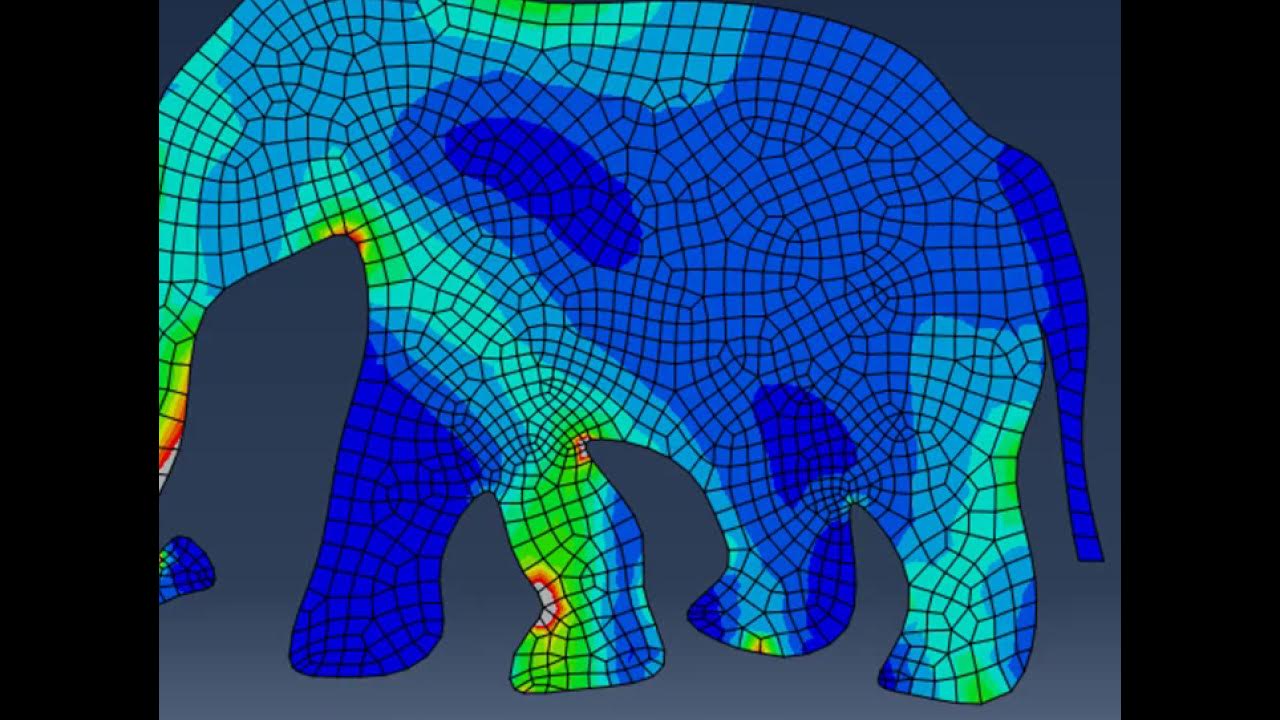Stiffness Matrix Method for Analysis of Beams ( With Overhanging )
Summary
TLDRThis video tutorial provides a comprehensive analysis of a beam using the stiffness matrix method. It details the beam's configuration, including spans and loads, and explains the process of calculating fixed end moments and slopes at supports. The tutorial emphasizes the significance of understanding fixed and hinged supports and introduces the concept of fully restrained structures. Through a step-by-step approach, it guides viewers in constructing stiffness matrices, calculating displacements, and applying slope-deflection equations to derive final moments. The session concludes by highlighting the interconnectedness of beam analysis methods, encouraging further exploration of related topics.
Takeaways
- 🔍 The analysis focuses on a beam with two spans (AB and BC) and an overhanging span (CD) using the stiffness matrix method.
- 📐 A point load of 100 kN is applied at 4 meters from point A in span AB, while a uniformly distributed load (UDL) of 20 kN/m acts on span BC.
- ⚖️ The structure has fixed supports at point A and hinged supports at points B and C, affecting the calculation of moments.
- 🔄 Five moments need to be calculated: at point A (fixed support), and two each at points B and C (hinged supports).
- ⚙️ Fixed end moments are calculated for spans AB and BC using specific formulas based on point loads and UDLs.
- 🛠️ The stiffness matrix method requires identifying the number of supports where slope occurs; in this case, there are two hinged supports.
- 📈 A fully restrained structure is created by replacing hinged supports with fixed supports, eliminating slopes.
- 📊 The stiffness matrix is a 2x2 matrix since there are two coordinates (B and C) where slopes occur.
- 💡 The final moments are derived from the calculated slopes at points B and C, applying them in slope deflection equations.
- ✅ The session concludes by noting that the same beam can be analyzed using the slope deflection method, with links for further details.
Q & A
What is the main objective of the beam analysis in the video?
-The main objective is to analyze a beam using the stiffness matrix method, specifically calculating the fixed end moments and determining the final moments at various joints.
What types of loads are acting on the beam?
-The beam has a point load of 100 kN at span AB, a uniformly distributed load of 20 kN/m across span BC, and another point load of 20 kN at 1.5 meters from point C in the overhanging span CD.
How many movements are to be found in this beam analysis?
-There are five movements to be found: one at the fixed support in point A and two at each of the hinged supports in points B and C.
What is the significance of the fixed end moments?
-Fixed end moments are important as they provide the initial moments that act at the ends of a span before considering the effects of any external loads.
How are the fixed end moments for span AB calculated?
-The fixed end moments for span AB are calculated using the formulas: M_AB = -W * A * B² / L² and M_BA = W * A² * B / L², where W is the load, A is the distance from point A, B is the distance from point B, and L is the total span length.
What is the structure of the stiffness matrix in this analysis?
-The stiffness matrix is a 2x2 matrix for this problem, as there are two coordinates with slopes to consider (points B and C). It contains stiffness values calculated based on the properties of the spans.
What happens to the supports when making a fully restrained structure?
-In the fully restrained structure, the hinged supports at points B and C are replaced with fixed supports, resulting in no slopes at those points.
How is the P matrix determined?
-The P matrix is determined by considering the final forces acting in the coordinate directions, which include contributions from the fixed end moments and any loads applied to the overhanging span.
What role do slopes play in the stiffness matrix method?
-Slopes are essential in the stiffness matrix method because they indicate how much the beam will deflect under load. The unknown slopes at the coordinates are crucial for calculating final moments.
What is the final outcome of the analysis presented in the video?
-The final outcome is the successful calculation of all moments at the joints of the beam, allowing for further analysis such as shear force and bending moment diagrams.
Outlines

Этот раздел доступен только подписчикам платных тарифов. Пожалуйста, перейдите на платный тариф для доступа.
Перейти на платный тарифMindmap

Этот раздел доступен только подписчикам платных тарифов. Пожалуйста, перейдите на платный тариф для доступа.
Перейти на платный тарифKeywords

Этот раздел доступен только подписчикам платных тарифов. Пожалуйста, перейдите на платный тариф для доступа.
Перейти на платный тарифHighlights

Этот раздел доступен только подписчикам платных тарифов. Пожалуйста, перейдите на платный тариф для доступа.
Перейти на платный тарифTranscripts

Этот раздел доступен только подписчикам платных тарифов. Пожалуйста, перейдите на платный тариф для доступа.
Перейти на платный тарифПосмотреть больше похожих видео

ANALISA STRUKTUR 2 MATRIKS KEKAKUAN LANGSUNG BALOK SOAL&PEMBAHASAN#Stiffnessglobalmatrix#matrix

Contoh Perhitungan Nilai Umum K Batang Tekan Struktur Baja | Lightboard

ANALISA STRUKTUR 2 MATRIKS FLEKSIBILITAS SOAL & PEMBAHASAN#Matriksfleksibilitas#Flexibilitymatrix

FEA 27: Isoparametric Element Example

ANALISA STRUKTUR 2 KONSEP DASAR MATRIKS FLEKSIBILITAS#flexibilitymatrix#Flexibility#matrix

FEA 23: 2-D Triangular Elements
5.0 / 5 (0 votes)
